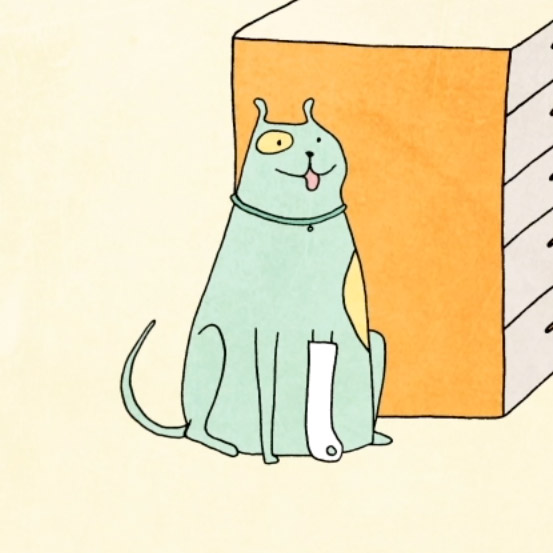PET STORIES: Bella’s Torn ACL
One of our most memorable patients of all time was Bella, a 168-pound mastiff, whose sweet loving heart far outweighed her intimidating size. Bella brought great joy to her family, so when Bella ruptured her cruciate ligament, neither she nor her family were going to let anything stand in the way of getting her fixed.
Like people, dogs have two cruciate ligaments to help provide support for their knees. Their presence keeps the femur and tibia from sliding around and destabilizing the joint. According to Dr. Hotchkiss, repairing torn cruciates is one of the most common orthopedic surgeries he performs. He adds that certain large breeds (Labradors and Rottweilers) show up with this injury more frequently than other pets. (This kind of injury in humans is referred to as a ruptured ACL or anterior cruciate ligament.)
Dogs can rupture these ligaments with sudden twisting movements while running or even from slipping on tile or wet concrete. In Bella’s case, she tore her cruciate while playing with the new puppy. Because Bella had this same injury to her other leg in 2006, her mom and dad knew just what to do.
Diagnosis
In most cases, diagnosing a cruciate tear simply requires a veterinarian’s examination and, if the patient is tender, a touch of sedation. Palpation of the knee joint is the key to the diagnosis although it is also imperative to take X-rays of both knees to look for any other problems.
Treatment
The next step is surgery. According to industry experts, pet owners spend more than $1 billion on cruciate surgeries for their pets each year. A variety of procedures exist to help stabilize the knee, but most surgeons will utilize one of three procedures. Because of Bella’s anatomy, breed and size, Dr. Hotchkiss determined that a tibial plateau leveling osteotomy (TPLO) would be the most effective solution.
As with any surgery, cost can be an issue. Some pet owners will question the need for surgery as fibrous tissue in the dog’s body will eventually partially stabilize the joint. Sadly, this could lead to bigger problems, including severe osteoarthritis or even a rupture of the ligaments in the other knee. Certainly this route only increases the pet’s discomfort. If an owner has the funds for surgery, it’s definitely considered the “gold standard” for treatment.
Recovery
After surgery, most dogs feel much better. In fact, it’s a challenge for owners to keep their pets rested during the recovery.
This 8-10 week recovery period is crucial. Too much activity can delay healing at the site or even cause enough damage that a second surgery might be needed! Bella had to stay in a crate or small area when she couldn’t be supervised, go outside ONLY on a leash and only for bathroom breaks until Dr. Hotchkiss said short walks were OK. And Bella had to avoid running,
How to avoid a torn ligament:
- Weight control! Excess weight creates additional stress on joints and can lead to ligament tears.
- Daily exercise. Spending about an hour each day engaged in moderate exercise is not only a good way to keep your dog healthy and limber – it will probably help you, too!
- Don’t overdo it! Since we work all week, most of the time the only chance we have to exercise our dogs is on the weekend. Lack of conditioning makes our dogs vulnerable to injury when they try to overdo it on the weekend. You wouldn’t run a marathon without training, so don’t expect your dog to hike 4-5 miles without building up to it.
Although Bella passed over the rainbow bridge long ago, we still remember her fondly and get the opportunity to see her family often – including two labs, Gracie and Duncan, who are slighter in frame but just as loving as their big sister Bella.


